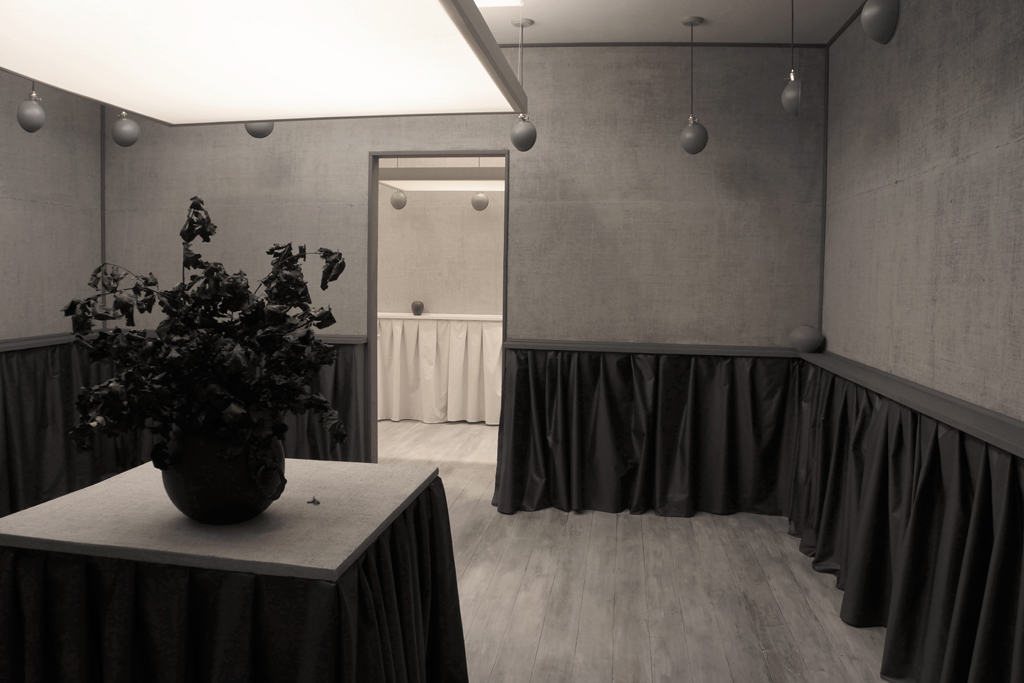INSTALLATION
Underglow
- Sept 13 to Nov 9, 2014
- The Polygon Gallery
(formerly known as Presentation House Gallery)
- Vancouver, BC
- Curated by Helga Pakasaar
- Photo documentation by Kelly Lycan and The Polygon Gallery
| A three-room installation: | ||
|---|---|---|
|
|
|
The installation Underglow — entirely in shades of black and white — transforms the gallery spaces to bring the past into dialogue with the present. The artist reflects on the growing impact of digital imagery on the display and reproduction of photographs. Underglow features a full-scale replica of 291 Gallery that operated in New York between 1905 and 1917. This now iconic photography gallery, initially conceived to promote the medium as home to the Photo-Secessionists, was the first exhibition space to profile photography as art and introduced many European modernist artists to America, including Picasso and Duchamp. Lycan's structure mimics a black and white photograph taken by Alfred Stieglitz of a 1906 exhibition at 291, itself built as an imitation of Victorian décor and Arts and Crafts design. Viewers are invited to walk through a simulation of the photograph, complete with decorative details and a foliage bouquet — everything except pictures on the walls. This illusionistic set is paralleled with Lycan's reconfiguration of the white cube gallery space. In this disorienting arrangement of grainy black and white photographs taken in mostly modernist New York museums, abstracted convex and concave spaces merge into the existing gallery architecture.
The exhibition also includes slight alterations to Presentation House Gallery's architecture. Based on the artist's research in the Gallery's photo-documentation archive of exhibition installations, Lycan references past techniques of exhibition display, drawing out the impact of display methods on the reception of art. This exhibition extends Lycan's ongoing investigations of the ways that décor and the armatures of display determine the meaning of objects, and draws attention to the interplay between systems of representation and perceptual experience.
Generous support of the exhibition provided by Scenic Oasis Film Inc.
